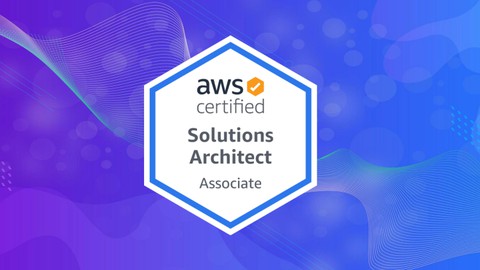AWS Solutions Architect Associate Practice Exam

Description
The AWS Certified Solutions Architect – Associate (SAA-C02) exam is intended for individuals who perform in a solutions architect role. The exam validates a candidate’s ability to design secure and robust solutions by using AWS technologies. The exam also validates a candidate’s ability to complete the following tasks: · Design a solution by using appropriate AWS services and by following architectural principles based on requirements · Provide implementation guidance based on best practices to the organization throughout the workload lifecycle
Domain 1: Design Resilient Architectures
1.1 Design a multi-tier architecture solution
Determine a solution design based on access patterns.
Determine a scaling strategy for components used in a design.
Select an appropriate database based on requirements.
Select an appropriate compute and storage service based on requirements.
1.2 Design highly available and/or fault-tolerant architectures
Determine the amount of resources needed to provide a fault-tolerant architecture across Availability Zones.
Select a highly available configuration to mitigate single points of failure.
Apply AWS services to improve the reliability of legacy applications when application changes are not possible.
Select an appropriate disaster recovery strategy to meet business requirements.
Identify key performance indicators to ensure the high availability of the solution.
1.3 Design decoupling mechanisms using AWS services
Determine which AWS services can be leveraged to achieve loose coupling of components.
Determine when to leverage serverless technologies to enable decoupling.
1.4 Choose appropriate resilient storage
Define a strategy to ensure the durability of data.
Identify how data service consistency will affect the operation of the application.
Select data services that will meet the access requirements of the application.
Identify storage services that can be used with hybrid or non-cloud-native applications.
Domain 2: Design High-Performing Architectures
2.1 Identify elastic and scalable compute solutions for a workload
Select the appropriate instance(s) based on compute, storage, and networking requirements.
Choose the appropriate architecture and services that scale to meet performance requirements.
Identify metrics to monitor the performance of the solution.
2.2 Select high-performing and scalable storage solutions for a workload
Select a storage service and configuration that meets performance demands.
Determine storage services that can scale to accommodate future needs.
2.3 Select high-performing networking solutions for a workload
Select appropriate AWS connectivity options to meet performance demands.
Select appropriate features to optimize connectivity to AWS public services.
Determine an edge caching strategy to provide performance benefits.
Select appropriate data transfer service for migration and/or ingestion.
2.4 Choose high-performing database solutions for a workload
Select an appropriate database scaling strategy.
Determine when database caching is required for performance improvement.
Choose a suitable database service to meet performance needs.
Domain 3: Design Secure Applications and Architectures
3.1 Design secure access to AWS resources
Determine when to choose between users, groups, and roles.
Interpret the net effect of a given access policy.
Select appropriate techniques to secure a root account.
Determine ways to secure credentials using features of AWS IAM.
Determine the secure method for an application to access AWS APIs.
Select appropriate services to create traceability for access to AWS resources.
3.2 Design secure application tiers
Given traffic control requirements, determine when and how to use security groups and network ACLs.
Determine a network segmentation strategy using public and private subnets.
Select the appropriate routing mechanism to securely access AWS service endpoints or internet-based resources from Amazon VPC.
Select appropriate AWS services to protect applications from external threats.
3.3 Select appropriate data security options
Determine the policies that need to be applied to objects based on access patterns.
Select appropriate encryption options for data at rest and in transit for AWS services.
Select appropriate key management options based on requirements.
Domain 4: Design Cost-Optimized Architectures
4.1 Identify cost-effective storage solutions
Determine the most cost-effective data storage options based on requirements.
Apply automated processes to ensure that data over time is stored on storage tiers that minimize costs.
4.2 Identify cost-effective compute and database services
Determine the most cost-effective Amazon EC2 billing options for each aspect of the workload.
Determine the most cost-effective database options based on requirements.
Select appropriate scaling strategies from a cost perspective.
Select and size compute resources that are optimally suited for the workload.
Determine options to minimize total cost of ownership (TCO) through managed services and serverless architectures.
4.3 Design cost-optimized network architectures
Identify when content delivery can be used to reduce costs.
Determine strategies to reduce data transfer costs within AWS.
Determine the most cost-effective connectivity options between AWS and on-premises environments.
Who this course is for:
- For all IT Professionals who want to gauge their AWS Knowledge for their upcoming job interview
- For anyone who want to take their career, and salary, to a whole new level with an AWS certification!






